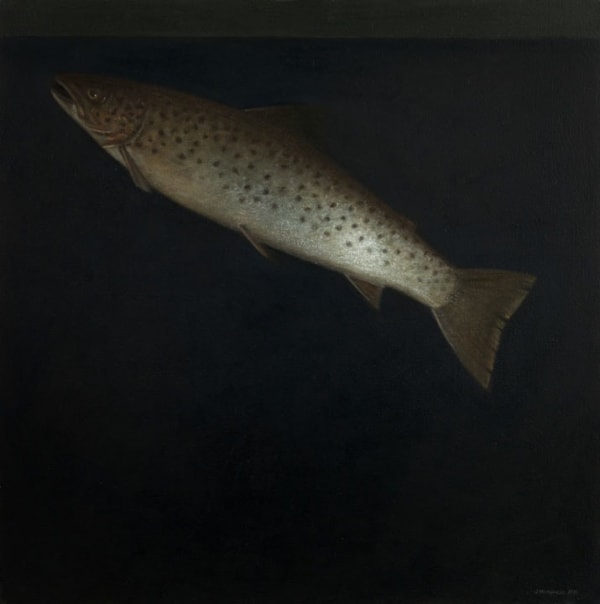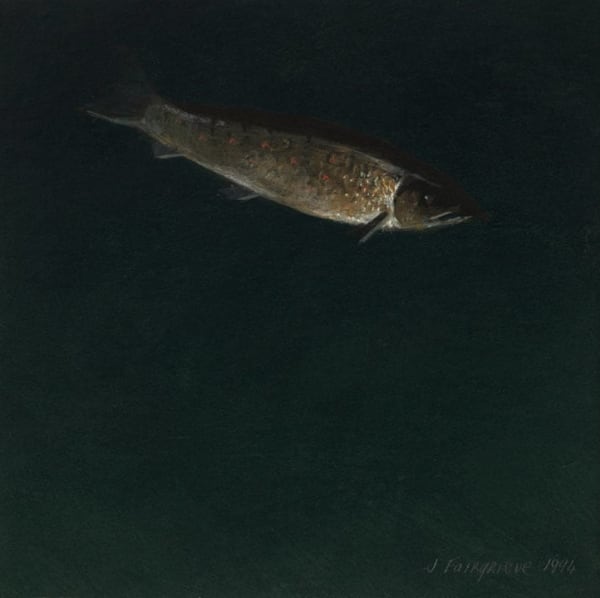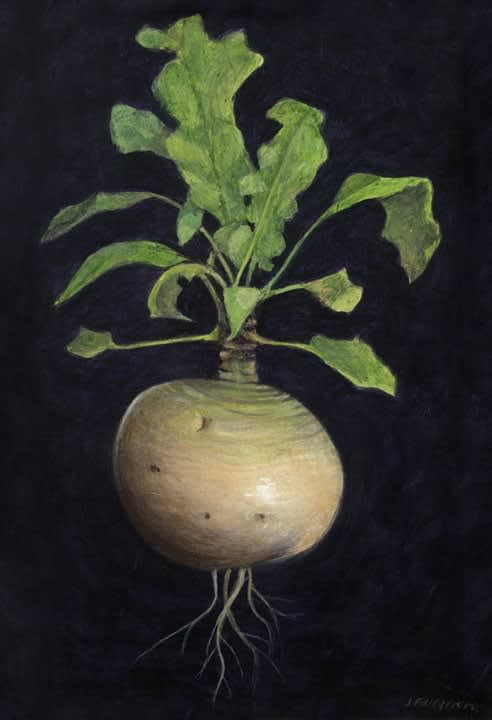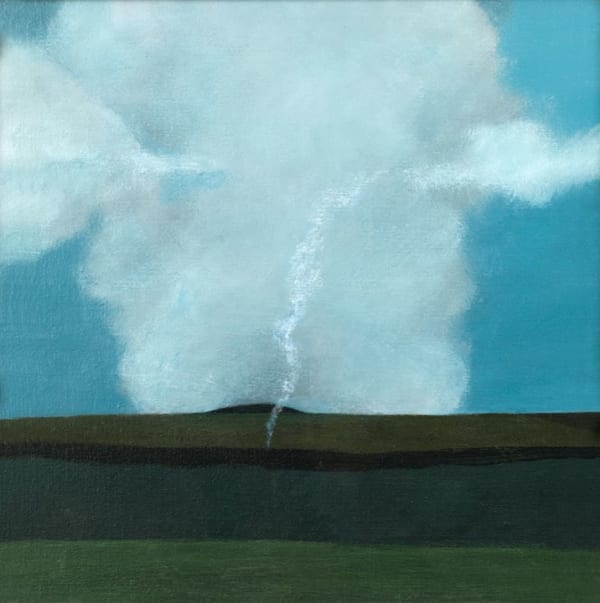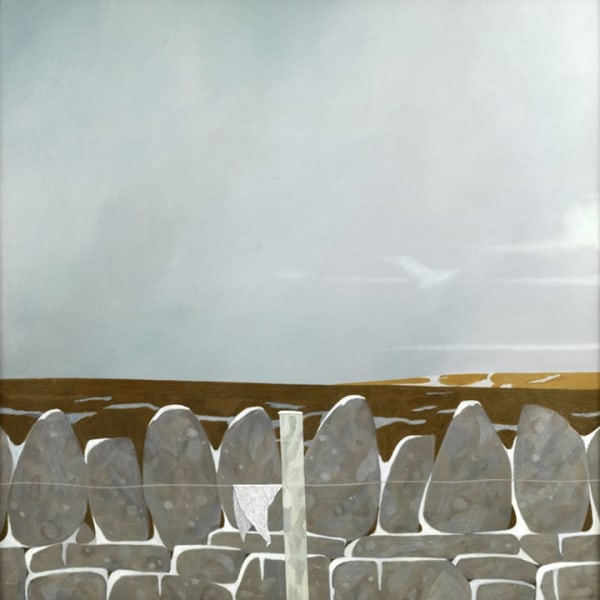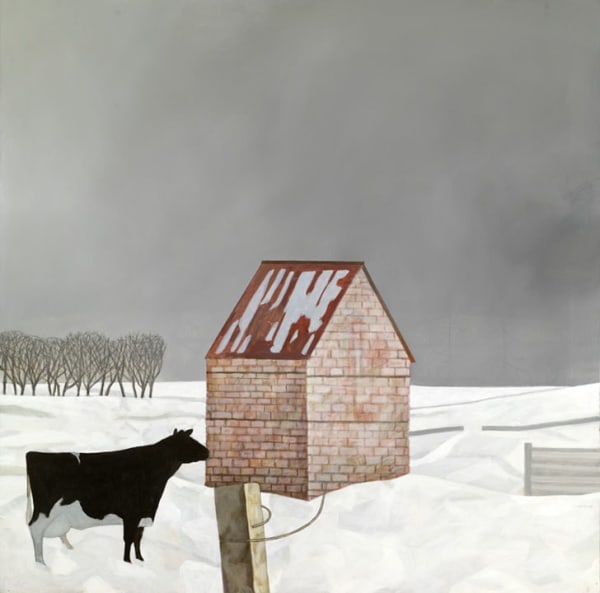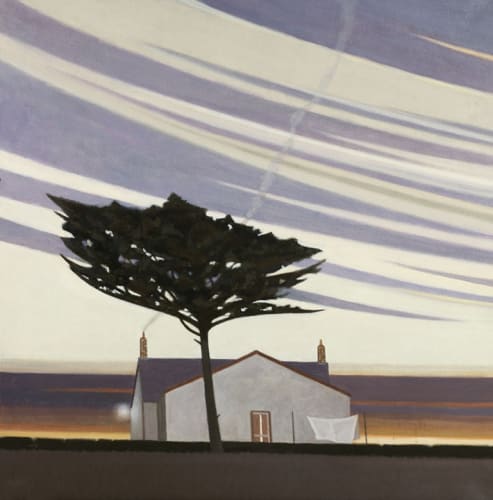James Fairgrieve RSA RSW : A Journey: A Retrospective Exhibition
Celebrating James Fairgrieve's extensive career, this large-scale exhibition represents a selection of work from his studio, reflecting a physical and artistic journey spanning around 50 years.
One of the most established and influential still-life painters of his generation, this exhibition will include a large body of his distinctive still lifes, inspired by the fruit and vegetables from his productive garden, and the collected objects from the coastline and woodland around his home in Gordon, alongside a collection of his early landscape and rural paintings dating back to the 1970s, celebrating the countryside vistas and environment of his Berwickshire home.
James H. Fairgrieve was born in Prestonpans, East Lothian in 1944. He attended Edinburgh College of Art from 1962-67 and was awarded a travelling Scholarship to Italy. On his return he was offered a teaching post at ECA where he remained until taking early retirement as a Senior Lecturer in Drawing and Painting in 2003. In 1975 he was elected as an associate member of the Royal Scottish Academy.
Between 1974 and 1978 he was President of the Society of Scottish Artists and in 2004 was elected a full member of the RSA.
In 1970 James Fairgrieve moved from East Lothian where he was born and grew up, to the village of Gordon in Berwickshire. Nestling between the Lammermuir Hills and the Cheviots, overlooking the lower Tweed, there was also easy access to the Berwickshire coast and its beaches.
Finding a run-down cottage in the heart of the village, which, with his wife Margaret, he spent the next 8 years transforming into a comfortable home and attic studio, whilst also producing a large body of work inspired by his new surroundings and inspired by his travels through the hills and landscapes whilst commuting to work at ECA.
The resulting work is a reaction to, and celebration of, this environment - the hills, fields, skies, dykes, fence posts, farm buildings, animals, birds (with the inevitable road kills), stones, shells, flotsam from the beaches, the changing seasons, weather conditions and light, led to a number of solo exhibitions: notably at The Scottish Gallery in 1974 and 1978, and the Mercury Gallery in London and Edinburgh in 1980, 1982, 1984 and 1987, and many more galleries in the UK and abroad.
In 1978, with another two children and requiring more space, the opportunity to arose to purchase a disused 1930s hospital building on the outskirts of the village. They took the challenge of converting it into a family home, a larger studio, and a productive garden, which eventually would provide a new stimulus for his work - fruit, vegetables and found objects, which continues to inspire Fairgrieve to this day.
As an artist, he has always been inspired by what he sees in the world around him, and through acute observation, attention to detail, and traditional painting skills, he attempts to create memorable images of stillness and calm. His distinctive still-lives use objects collected over the years, often combined with fruit and vegetable from his garden, are crafted with acute observation and attention to detail, conveying a Zen-like sense of balance, poise and calm.
A great admirer of the work of Giorgio Morandi, Adriaen Coorte, Juan Sanchez Cotan, and other artists who are able to express so much in an understated and economical way, his interest moved gradually over time, away from the wide open spaces of landscape to the more intimate study of objects collected from these landscapes, and nearby beaches: feathers; leaves; stones; shells; weathered wood and jetsam, all washed up by the sea. This presented an opportunity to study at close quarters these collected objects, the spaces around and between them, the light on them, their textures and the way in which simple, everyday objects can be transformed into images which subtly comment on human behaviour.
Fairgrieve's other passion is fly fishing, for which he has been 'capped' by Scotland in International Competition on a record number of occasions. He is Chairman of the Gordon Community Woodland where he walks everyday with his wife and their dog, Tweed.
As an artist he has become one of the most established and influential Still-life painters of his generation, winning numerous awards. His work can be found in many major public and private collections in the UK and abroad.
He has exhibited regularly in Edinburgh, London and internationally since 1969.
Publications include 'Eye in the Wind', E Gage; 'Scottish Watercolour Paintings', J Firth; 'A Picture of Flemings', B Smith; 'Who's Who in Art', Debretts; 'People of Today', Scottish Field; 'Dictionary of International Biography'; and 'The Artist Magazine-Masterclass'.


